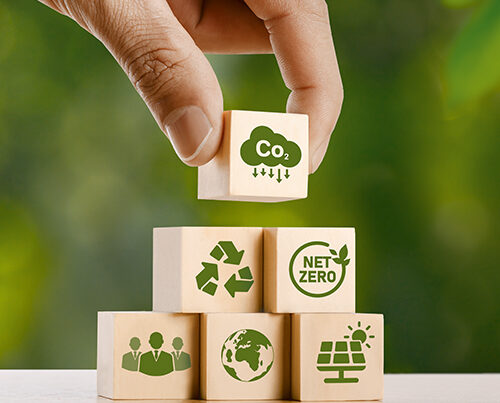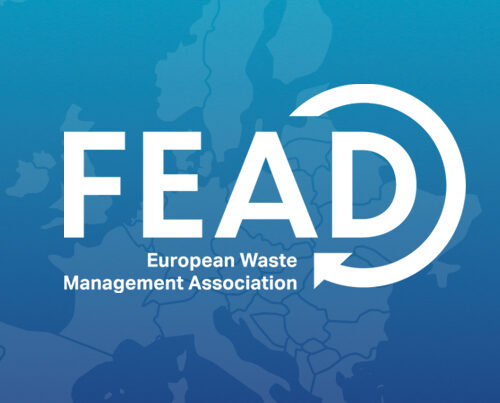Sustainability criteria still do not play the role they should in public procurement. The supposedly cheapest price often has high follow-up costs, which in turn have to be borne by the public sector.
If you buy cheap, you pay twice. This old wisdom of the merchants is now known to almost every consumer who has ever fallen for supposedly cheap offers in online shops. And it applies all the more to the public sector, which, with a huge purchasing power of an estimated 500 billion euros a year, could persuade manufacturers, contractors and service providers to bring more socially balanced, environmentally friendly and resource-saving products and offers onto the market.

Yes, sustainably produced products are somewhat more expensive because environmentally friendly and resource-saving production processes are more costly. On the other hand, sustainable products and services avoid ecological follow-up costs that have to be borne by the general public and thus by the public purse. The overexploitation of people’s natural resources costs us all dearly.
Moreover, sustainable products save energy. The potential is enormous: the European Commission estimates that sustainable products can save around 132 million tonnes of primary energy by 2030. This is equivalent to about 150 billion cubic metres of natural gas, almost the entirety of the EU’s Russian natural gas imports. For a more resilient, independent Europe that wants to combine freedom and sustainability, the public sector as a buyer is an important strategic driver.

In the first half of 2021, sustainability criteria played a role in just under 11,000 procurement transactions of almost 87,000 public contracts and concessions
Public procurement is still purely a price competition
So there are plenty of reasons for the public sector to focus on sustainability criteria in its procurement processes. Unfortunately, however, this still happens far too rarely: According to the procurement statistics of the Federal Ministry of Economics and Technology for the first half of 2021 (only available in German) – the first and so far only statistical evaluation of procurement procedures in Germany – sustainability criteria only played a role in just under 11,000 of the almost 87,000 public contracts and concessions. This corresponds to a share of just 12.5 per cent. In terms of contract volume, the federal, state and local governments awarded 31.5 per cent of the total volume with sustainability criteria. In almost 60 per cent of the cases, the only award criterion was price or cost.
If these findings from the public statistics are already sobering, the overall picture becomes even more clouded when analysed in depth. Scientists at the University of the Bundeswehr Munich, for example, investigated what influence sustainability criteria actually have in the award procedure. For this purpose, they took a closer look at the documents of 160 award procedures in the field of cleaning services, cleaning agents and cleaning equipment. The result was that sustainability criteria had an average influence on the decision for a bidder of just over two percent.
Centrally defined sustainability criteria as a positive catalogue
There is no lack of political targets. The 2030 Agenda for Sustainable Development has already defined the topic of sustainability in public procurement as a significant goal of the United Nations. The EU wants to introduce binding minimum criteria for green procurement with the Circular Economy Action Plan. And in Germany, the Waste Management Act has already obligated federal public bodies to engage in green procurement since 2012. The circular economy laws of the federal states contain comparable requirements for state authorities and municipalities. Last year, the General Administrative Regulation on the Procurement of Climate-Friendly Services (AVV Klima) was added. But nothing has changed so far. In fact, public procurement and concession procedures are still pure price competitions. The cheapest bidder gets the contract.
If one assumes that the contracting authorities have no malicious intent, one possible reason could be found in the sometimes vague and not very concrete specifications for the operational level – combined with the fear of doing something wrong in the award procedure. It is true that the Federal Environment Agency lists numerous procurement guidelines, recommendations for action, life cycle assessments and product certifications in its database “Environmental Criteria”, which can support public contracting authorities in green procurement. But this is not concrete enough to have a market-penetrating effect on both sides of the market – suppliers and demanders. What is missing is a concrete, legally secured positive catalogue of the sustainability standards that products and service providers must meet in order for the public sector to be allowed to procure or commission them at all.
Such concretely formulated framework conditions would send a clear signal to the market: The public sector would know exactly which sustainability standards products and service providers have to meet in order to carry out an award procedure in a legally secure manner. Suppliers, in turn, would know exactly which standards they or their products must meet in order to even be considered for the public sector. From now on, no company that wants to keep the federal government, the states and the municipalities as customers would be able to avoid the issues of climate protection, biodiversity and circular economy. Sustainability criteria would no longer be merely the fig leaf of de facto price competition, but price competition as we have it today would take place within guard rails oriented towards sustainability criteria.
A positive example of this kind of catalogue is the minimum standard for recyclable design by the Zentrale Stelle Verpackungsregister (Central Agency Packaging Register – ZSVR). In this standard, the ZVSR defines annually, in agreement with the Federal Environment Agency and the expert group “Recyclable Design”, which packaging is considered recyclable and which is not. Manufacturers who wish to place only recyclable packaging on the market can use these standards as a guideline. The basis of the minimum standard is section 21 of the Packaging Act, which is intended to provide manufacturers with incentives to both improve the recyclability of their packaging and increase the proportion of recycled material by means of staggered licence fees. Decried for years as a toothless tiger, Section 21 of the Packaging Act has had a market-shaping effect in the packaging sector simply by defining the minimum standards and its annual further development. Packaging manufacturers now know what is considered recyclable and can adjust their product policy accordingly.
Sustainability standards for the top ten
We also need comparable clarity in green public procurement. Only if the sustainability criteria are clearly and unambiguously defined at a central point, the rules are unambiguous: For the manufacturer or supplier, a deviation means a practical exclusion from the market. The contracting authority, in turn, must expect a review procedure if the criteria in the award procedure deviate from the centrally defined sustainability criteria. It is by no means necessary to define sustainability criteria for all products demanded by the public sector. For a start, it would be sufficient to define sustainability standards for the ten most frequently demanded products and services.
Resistance is to be expected when implementing a clear sustainability course in public procurement. After all, the fat years of surplus government revenues and negative interest rates for government bonds are over. The Corona crisis, the Ukraine war, the accommodation and care of traumatised war refugees as well as persistently high energy prices are clearly making themselves felt in the national budgets. Money is no longer so loose, although schools need to be renovated and infrastructures need to be renewed. For the third time in a row, the Federal Republic of Germany failed to meet its fiscal sustainability target last year, thus saddling future generations with new debts.
There are no savings in the crisis. That is right. But precisely in order not to burden future generations even more, we should pay more attention to sustainability in public procurement. Because those who buy cheaply pay twice. Eventually.

Image credits: image 1: Adobe Stock: Ira; image 2: REMONDIS; image 3: Adobe Stock: blacksalmon












